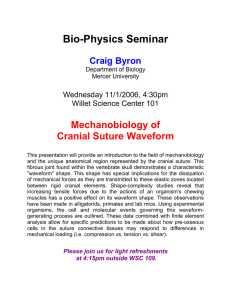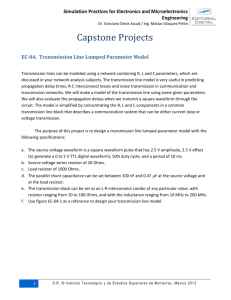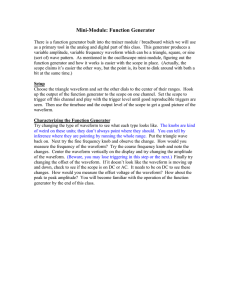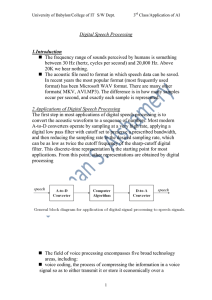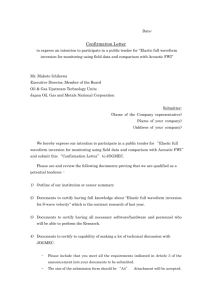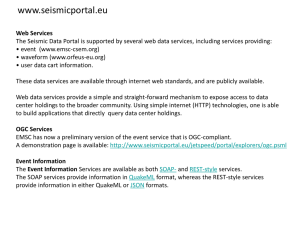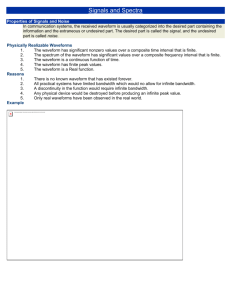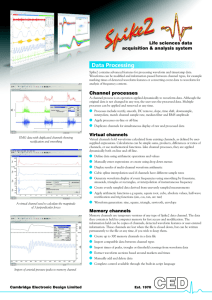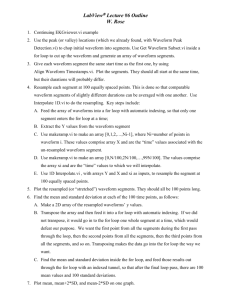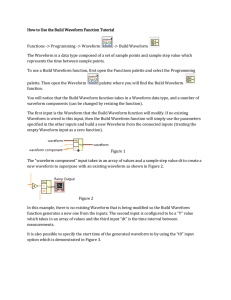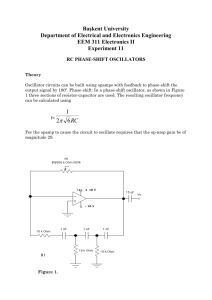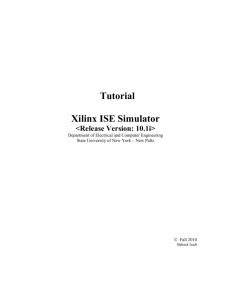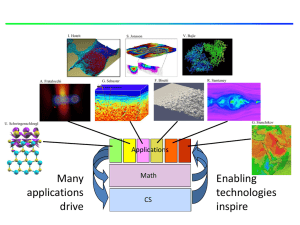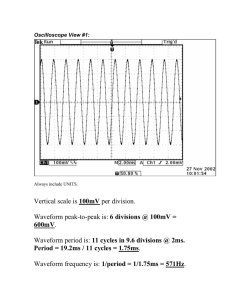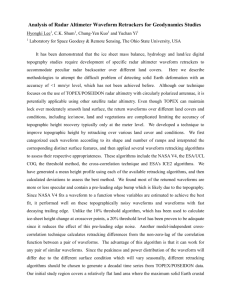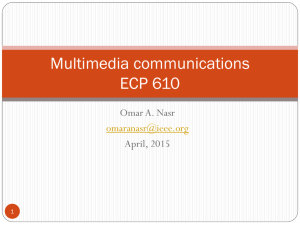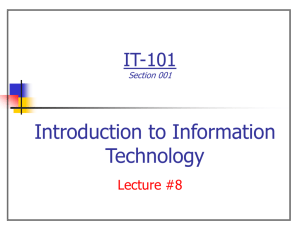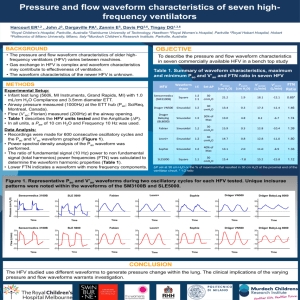University of Babylon Undergraduate: third class
advertisement
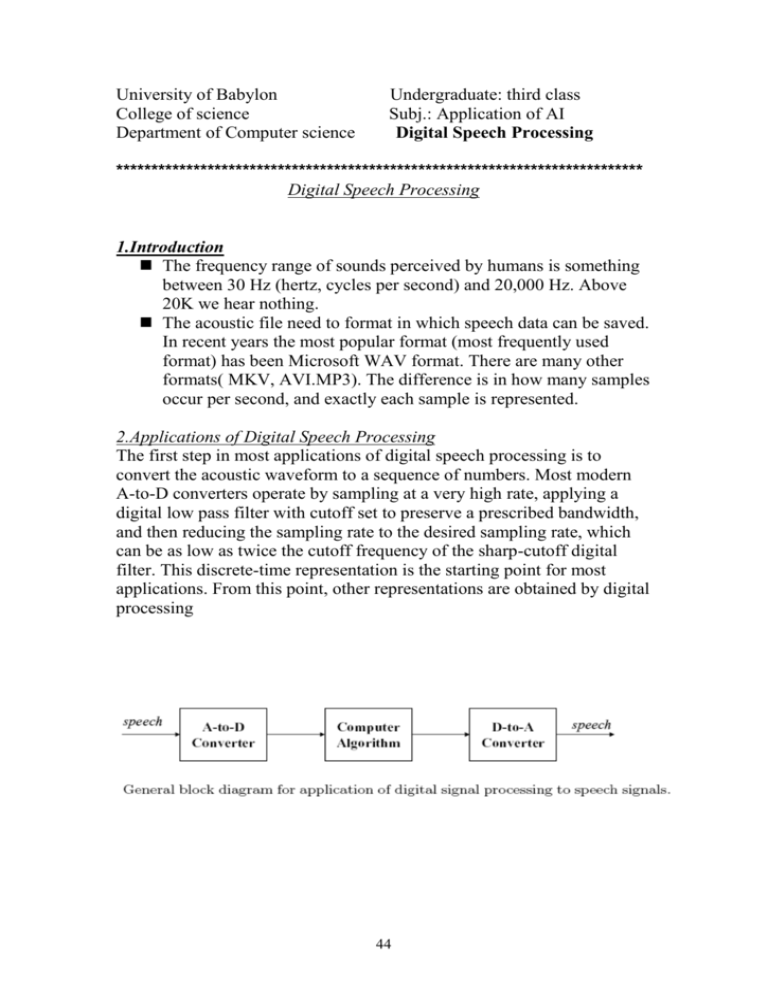
University of Babylon College of science Department of Computer science Undergraduate: third class Subj.: Application of AI Digital Speech Processing *************************************************************************** Digital Speech Processing 1.Introduction The frequency range of sounds perceived by humans is something between 30 Hz (hertz, cycles per second) and 20,000 Hz. Above 20K we hear nothing. The acoustic file need to format in which speech data can be saved. In recent years the most popular format (most frequently used format) has been Microsoft WAV format. There are many other formats( MKV, AVI.MP3). The difference is in how many samples occur per second, and exactly each sample is represented. 2.Applications of Digital Speech Processing The first step in most applications of digital speech processing is to convert the acoustic waveform to a sequence of numbers. Most modern A-to-D converters operate by sampling at a very high rate, applying a digital low pass filter with cutoff set to preserve a prescribed bandwidth, and then reducing the sampling rate to the desired sampling rate, which can be as low as twice the cutoff frequency of the sharp-cutoff digital filter. This discrete-time representation is the starting point for most applications. From this point, other representations are obtained by digital processing 44 The field of voice processing encompasses five broad technology areas, including: voice coding, the process of compressing the information in a voice signal so as to either transmit it or store it economically over a channel whose bandwidth is significantly smaller than that of the uncompressed signal; voice synthesis, the process of creating a synthetic replica of a voice signal so as to transmit a message from a machine to a person, with the purpose of conveying the information in the message; speech recognition, the process of extracting the message information in a voice signal so as to control the actions of a machine in response to spoken commands; speaker recognition, the process of either identifying or verifying a speaker by extracting individual voice characteristics, primarily for the purpose of restricting access to information (e.g., personal/ private records), networks , or physical premises. • spoken language translation, the process of recognizing the speech of a person talking in one language, translating the message content to a second language, and synthesizing an appropriate message in the second language, for the purpose of providing twoway communication between people who do not speak the same language. 3.Speech Coding Perhaps the most widespread applications of digital speech processing technology occur in the areas of digital transmission and storage of speech signals. In these areas the centrality of the digital representation is obvious, since the goal is to compress the digital waveform representation of speech into a lower bit-rate representation. It is common to refer to this activity as “speech coding” or “speech compression.” 45 Figure shows a block diagram of a generic speech encoding/decoding (or compression) system. In the upper part of the figure, the A-to-D converter converts the analog speech signal xc(t) to a sampled waveform representation x[n]. The digital signal x[n] is analyzed and coded by digital computation algorithms to produce a new digital signal y[n] that can be transmitted over a communication channel or stored in a storage medium as ˆy[n]. As we will see, there are a myriad of ways to do the encoding so as to reduce the data rate over that of the sampled and quantized speech waveform x[n]. Because the digital representation at this point is often not directly related to the sampled speech waveform, y[n] and ˆy[n] are appropriately referred to as data signals that represent the speech signal. The lower path in Figure shows the decoder associated with the speech coder. The received data signal ˆy[n] is decoded using the inverse of the analysis processing, giving the sequence of samples ˆx[n] which is then converted (using a D-to-A Converter) back to an analog signal ˆxc(t) for human listening. The decoder is often called a synthesizer because it must reconstitute the speech waveform from data that may bear no direct relationship to the waveform. The compressed representation can be more efficiently transmitted or stored, or the bits saved can be devoted to error protection. Speech coders enable a broad range of applications including narrowband and broadband wired telephony, cellular 46 communications, voice over internet protocol (VoIP) (which utilizes the internet as a real-time communications medium), secure voice for privacy and encryption (for national security applications), and for storage of speech for telephone answering machines. Speech coders often utilize many aspects of both the speech production and speech perception processes, and hence may not be useful for more general audio signals such as music. Coders that are based on incorporating only aspects of sound perception generally do not achieve as much compression as those based on speech production, but they are more general and can be used for all types of audio signals. These coders are widely deployed in MP3 and for audio in digital television systems 47

